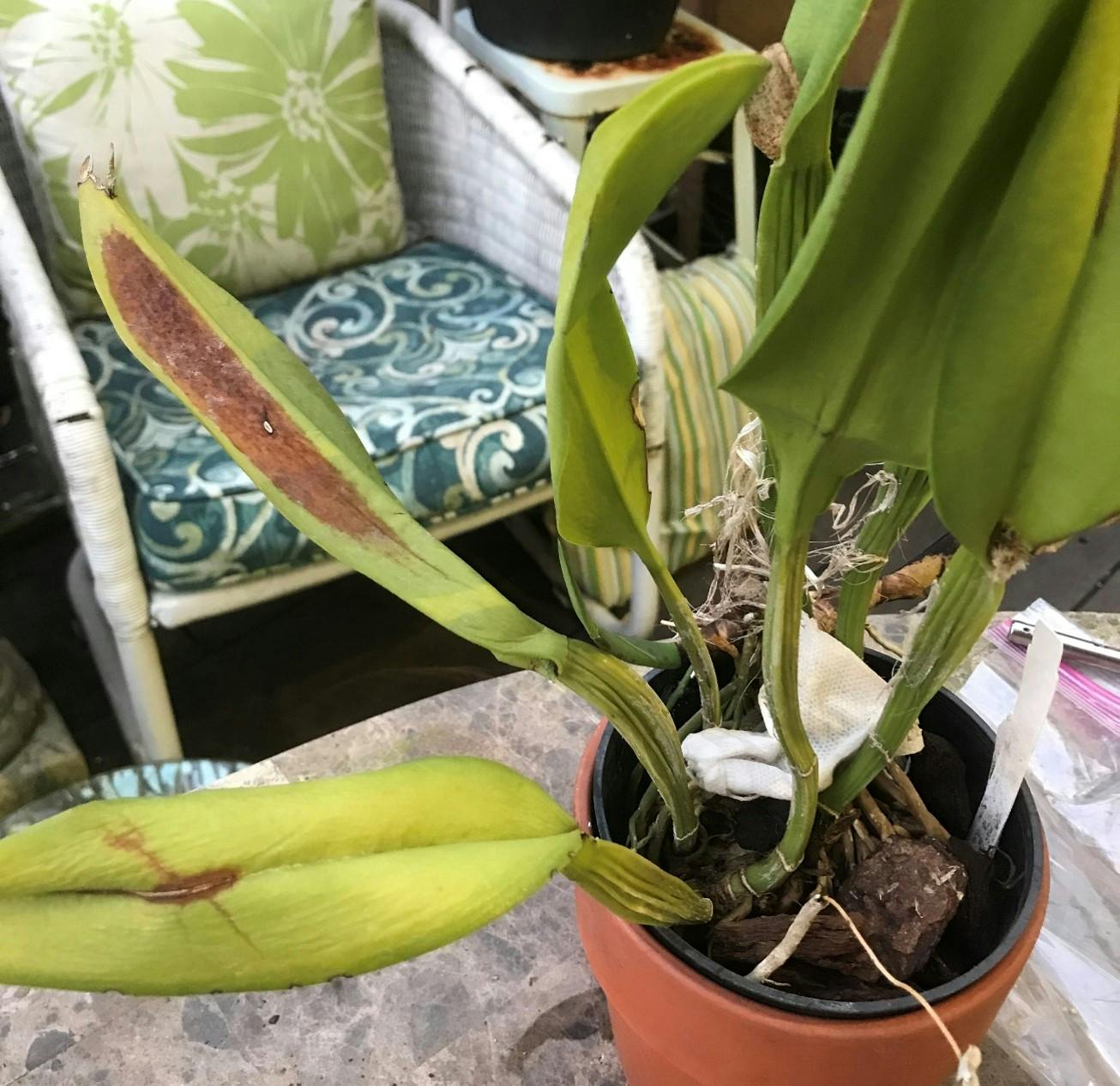
Bulb, Stem and Root Rots


Gallery
Symptoms
Fusarium – Fusarium wilt or Fusarium rot are common names for fungal infections with Fusarium oxysporum. The pathogen infects the plants through the roots or cut edge of the rhizome. A circle of purple or pinkish-purple discoloration appears in the outer layers of the rhizome or stem. Toxic substances produced by the fungus can plug the vascular tissue so water uptake is inhibited, and the plant ultimately looks wilted. The leaves become yellow or grayish green and wilted. The plants decline and may ultimately die from the disease.

Rhizoctonia – Root rot and brown rot are common names for the fungal infections with Rhizoctonia solani. Pellicularia filamentosa and Thanatephorus cucemeris apply to the sexual stage of the fungus. The pathogen infects plants through the roots and progresses through the rhizome and pseudobulb. Rhizoctonia causes the roots to die off and a brown rot that moves up slowly through the pseudobulbs. The leaves may yellow and shrivel and new growths are progressively smaller, while the plant declines. The process is gradual in mature plants.
Sclerotium - Basal rot, collar rot and crown rot are common names for fungal infections with Sclerotium rolfsii. Pellicularia rolfsii is the sexual stage of the fungus. The base of the stem turns light yellow and the infection spreads to the roots and up to the leaves. The affected tissue turns brown, collapses and rots. The disease girdles and destroys the basal part of the plant. Affected leaves become yellow and die. Small yellow or tan sclerotia about the size and color of mustard seeds form on the affected tissue, which will perpetuate the fungus.
Treatment
Fusarium Treatment - Remove all parts of the plant that show the purple discoloration, sterilizing the cutting tool between each cut. Repot into fresh medium, and drench with a systemic fungicide labeled for treatment of the Fusarium pathogen.
Rhizoctonia Treatment - Remove infected parts of the plant, sterilizing the cutting tool between each cut. Repot into fresh medium, and drench with a systemic fungicide labeled for treatment of the Rhizoctonia pathogen.
Sclerotium Treatment - The disease is highly contagious, so the best solution is to discard the plant and remove the source of infection from your collection. If the plant is valuable, isolate it, remove the infected part of the plant, sterilizing the cutting tool between each cut. Repot into fresh medium, and drench with a systemic fungicide labeled for treatment of the Sclerotium pathogen.
Prevention
Fusarium - Good sanitation and air movement. Sterilize cutting tools.
Rhizoctonia - This fungal disease is occurs when the potting medium breaks down, drainage is poor or plants are overwatered. Rots set in when roots are damaged by injury or salt accumulation, either from hard water or overfertilizing. Flush pots with fresh water at least monthly to prevent root damage. Beneficial soil microorganisms can be used to make roots more resistant to harmful fungi.
Sclerotium - The fungus thrives in hot, humid environments and spread by splashing water. Remove or isolate infected plants. During hot, humid months, increase air movement to help cool the plants and avoid overwatering.

FREE ACCESS: Orchid DealWire
Get notified when orchid vendors have special promotions and exclusive savings.








